FANN received notice of a promising new book, Garden Revolution, How our Landscapes Can Be a Source of Environmental Change, by Larry Weaner and Thomas Christopher, Timber Press (save 30% when you order by June 23). We were intrigued by the book’s advice, which we’ve been hearing from FANN members for 30+ years.
|
Nursery crops research and extension faculty from the southeastern and mid-Atlantic U.S., in collaboration with the Horticultural Research Institute, undertook the task of updating the seminal paper "Strategic vision of container nursery irrigation in the next ten years" by Beeson et al. published in the Journal of Environmental Horticulture in 2004. The perspectives captured in that paper are foundational for exploring the challenges that lie ahead. We recently reflected on the predictions and conclusions of Beeson et al. and discuss their relevance to today’s nursery and greenhouse industries.
|
The growing season is the best time to implement a practical sanitation plan. Consider this the season of good, fast growth in both your plants, as well as insects, diseases and weeds. Plentiful irrigation, nutrients and sunlight offer a paradise for both plants and pests alike. Sanitation is an afterthought during the busy season. Given the strains on labor and time, the focus is keeping your head above water and orders moving out the door.
|
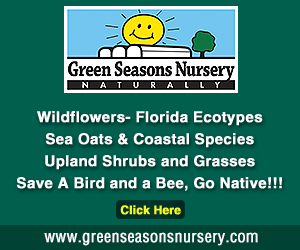

The Supreme Court opened the door to more lawsuits over the Clean Water Act in a Tuesday ruling that allowed businesses to challenge the federal government's decisions on which wetlands and streams it can regulate.
|
More than 4 million Americans could get pay hikes under new federal regulations that will double the salary level under which workers must be paid overtime, the White House said May 17. The Labor Department’s final rule establishes a new overtime pay threshold of $47,476 a year for those working more than 40 hours a week. That’s below the $50,400 that the administration announced in its proposal last June, but twice the current level of $23,660 a year, which has been unchanged for more than a decade.
|
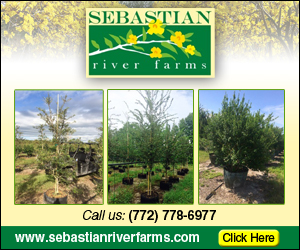

FANN’s full team will appear with our complete makeover of the Volkmann yard in Bradenton, on Season 7 Episode #10, howtodoFlorida (Flip My Florida Yard!).
|
FANN growers and staff traveled to the University of Florida IFAS Mid-Florida Research Center in Apopka Friday, June 10, 2016, to meet with the Florida Wildflower Foundation, Florida Museum of Natural History and US Fish & Wildlife Services staff.
|
Show your FANN pride in comfort with our 100% organic cotton FANN shirts printed with eco-friendly inks. Shirts feature FANN logo on front, websites and unique plant and creature art on back.
|
The Coleman Federal Correctional Institute in Sumter County has joined FANN as a landscape associate member institution. Through its relationship with the University of Florida IFAS Sumter County Extension, Coleman is providing its inmates with horticultural training opportunities to enhance their re-entry into society and lower recidivism rates.
|

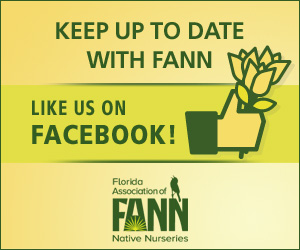
July 2016
July 9-12 – Cultivate16 in Columbus, Ohio
August 2016
September 2016
September 16 – FANN Members Meeting at the Landscape Show!
September 21 – First day of Fall
For more events, click here.
|

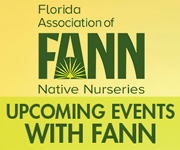
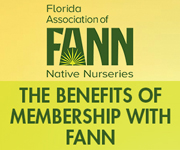
Glyphosate poses no cancer risk, according to a report just out from a joint United Nations and WHO meeting on herbicide residues. But just a year ago, another group in the WHO, the International Agency for Research on Cancer, concluded glyphosate is probably carcinogenic. Is anyone not confused at this point?
|
Buyer, beware! Want your landscape to support more pollinators? Choose your native plants wisely and don’t buy into the hype promoted by too many superficial trade rags. In the traditional horticulture industry, cultivars are selected primarily for their aesthetic value. There’s nothing wrong with planting "pretty," but modern customers are demanding more from their plants and landscapes, as they should. To preserve biodiversity, make sure the plants you’re choosing retain their value in your local food web, supporting caterpillars (future butterflies!), bees and other creatures we humans ultimately depend on for our own existence — and enjoyment.
|
| |
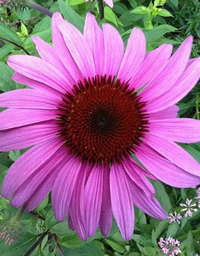 |
| |
|
Reports of trees in North America and Europe that are sensitive to direct street light illumination are well documented. Among the effects are changes in bud break in the spring or how long leaves are retained on deciduous trees in the fall. Known sensitive species include Aesculus hippocastanum, Betula pendula, Liquidamber styraciflua, Populus canadensis, Platanus sp., Populus nigra, Salix fragilis and Ulmus americana. Artificial light affects plants in multitudes of ways. Horticulturists know that daylength-sensitive plants are easily manipulated into flower or vegetative state with short periods of low-intensity night lighting (5 lux or less). Chrysanthemums are the poster plant for using lighting to time flowering; it's possible to flower mums any time of the year using lighting. Knowing that artificial light affects plants begs the question: How are artificial lights at night that are becoming more and more common affecting budbreak, flowering, leaf abscission and even nighttime pollinators?
|
A University of Florida Institute of Food and Agricultural Sciences expert predicts the Q-biotype whitefly discovered in April in Palm Beach County will likely cause problems for growers. The Q-biotype whitefly – not to be confused with the B-biotype, which came to Florida in the mid-1980s – is now being seen outside greenhouses and nurseries and poses a threat to ornamental plants and agricultural crops.
|
Over the next 50 years, landscape architects must coordinate their actions globally to fight climate change, help communities adapt to a changing world, bring artful and sustainable parks and open spaces to every community rich or poor, preserve cultural landscape heritage, and sustain all forms of life on Earth. These were the central messages that came out the Landscape Architecture Foundation (LAF)‘s New Landscape Declaration: Summit on Landscape Architecture and the Future in Philadelphia, which was attended by over 700 landscape architects.
|
|
| |
|

